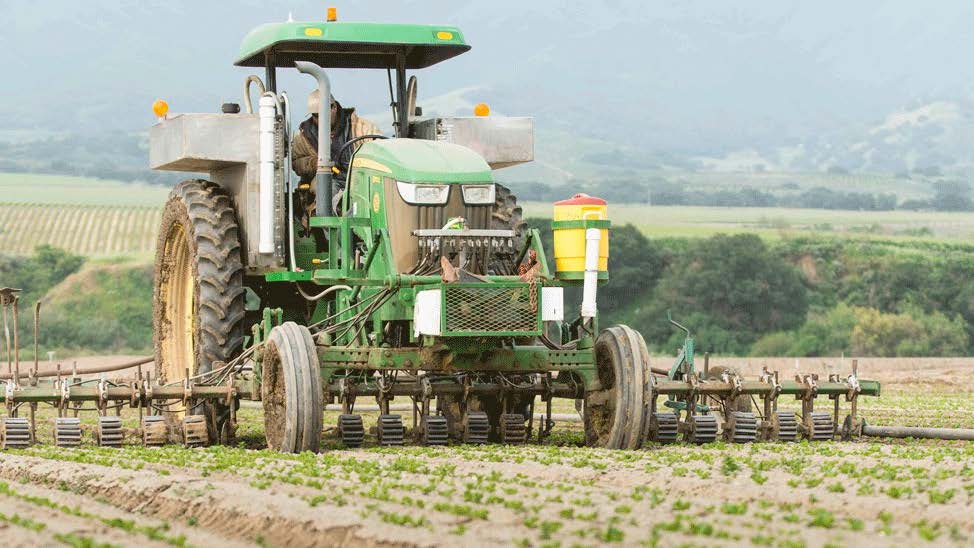Picktrace: Revolutionizing Agriculture with a Farmer-Centric Approach
In the world of technology and innovation, there are moments when a simple idea born out of necessity can transform an entire industry. Such is the story of Picktrace, a company founded by Austin and Harrison Steed, whose intrinsic desire to help ease the burden on their family’s farm, has led to the development of a revolutionary farm management solution. In this article, we delve into the roots of Picktrace, the company’s commitment to understanding the challenges faced by farmers, and its relentless pursuit of customer-centric solutions.
A Seed of Innovation Takes Root
The journey of Picktrace began in 2012 when Steeds’ father approached them with a simple yet profound request. They needed a tool to verify their farming systems and manage data about their laborers, who were the backbone of their operations. This request sowed the seeds of inspiration for Picktrace.
Steed recalls those early days, saying, “We are solving ‘our farms’ problem.” This commitment to addressing the very challenges faced by their own family’s farming operation was the driving force behind Picktrace’s inception. As their farm management solution took shape, it quickly transformed the Steed family’s farming experience within the first season of its adoption. It was a solution born out of necessity, honed through practical experience, and destined to revolutionize the agricultural landscape.
A Team Invested in Agriculture
What sets Picktrace apart is the composition of its team. Harrison Steed is adamant about ensuring that every member of the Picktrace family, whether they are sales representatives or engineers, possesses an interest in agriculture and learning more about it. This approach ensures that team members are not just professionals but passionate advocates for solving the real problems faced by farmers.
At Picktrace, customers are paramount. Steed stresses the importance of being customer-centric, stating a golden rule of the company is to “never be the reason why someone can’t work.” Every decision made at Picktrace revolves around whether it genuinely enhances customers’ lives, resolves their issues, and accommodates the unique situations they encounter.
Overcoming Connectivity Challenges
Connectivity posed a significant challenge for Picktrace in the fields. However, in 2018, they introduced “smart sims” into their product, effectively alleviating connectivity concerns. Today, connectivity problems are a rarity, a testament to Picktrace’s commitment to delivering practical and reliable solutions to farmers.
Bridging the Gap: Immersive Farm Experience for Employees
To ensure that every member of the Picktrace team truly comprehends the intricacies of farming, the company organizes two offsite events each year. One of these events take place at the Steed family farm, providing a unique opportunity for everyone working at Picktrace to gain firsthand insight into the hard work and dedication that farming demands and the processes involved in a variety of produce, such as citrus, berries and avocados.
Moreover, Picktrace’s R&D teams are always out in the fields, directly observing the challenges faced by farmers. This hands-on approach allows them to make real-time adjustments to their solutions, ensuring that they are finely tuned to address the unique needs of each of their clients. “We know each client has their unique challenges, and there is no one-size fits all solution,” Steed mentioned as he explains the excitement his team feels when being in the field launching a new product for a client.
“Field School” represents another unique facet of Picktrace’s approach. Team members actively engage in continuous learning from their experiences in the field and enthusiastically share these insights with the entire team. This culture of perpetual learning and knowledge-sharing keeps the Picktrace team at the forefront of innovation.
Picktrace’s vision is clear: to revolutionize the agriculture industry with a comprehensive farm management solution that genuinely alleviates growers’ most pressing problems.
Picktrace is not merely a technology company; it’s a company with a deep-seated connection to the fields. Austin and Harrison Steed and their team have made it their mission to simplify and enhance the lives of farmers. Their journey, from a simple idea to a company that strives to revolutionize agriculture, is a testament to their unwavering commitment to making a positive impact on the lives of those who feed the world.
To learn more about Picktrace and their mission, you can visit their website.
Author: Athena Ushana










